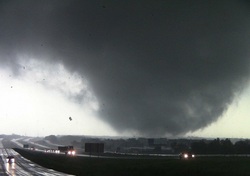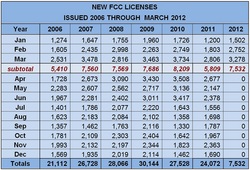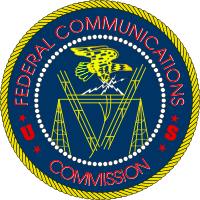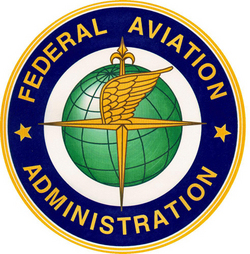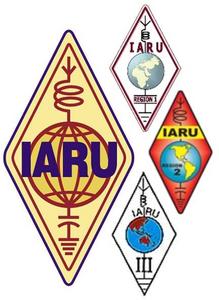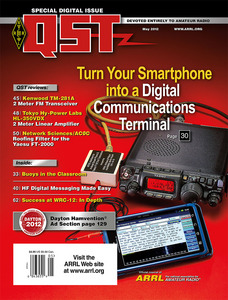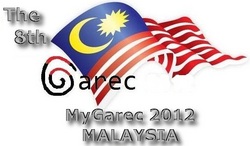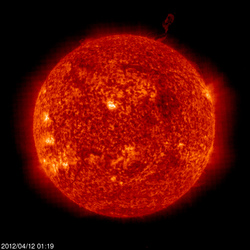 April 12, 2012 John E. Ross, KD8IDJ, Editor
| |||||||||||
+ Available on ARRL Audio News. + Public Service: North Texas Hams Respond When Tornados Strike
On April 3, 2012, perfect conditions conducive to tornado activity converged on North Texas. A slow moving front, combined with abnormally warm temperatures and moist air coming in from the south, produced large hail, numerous funnel clouds and tornados. As the weather worsened, hams in North Texas activated ARES® and RACES nets. Spotters reported their observations to their local Emergency Operations Center, which acted on that information in a timely manner to inform the public of the approaching storms, giving them time to get to safety. A total of 21 confirmed tornados -- including one EF3 and two EF2 twisters -- swept through the Dallas-Fort Worth metroplex during the seven hour storm. According to ARRL North Texas Section Public Information Coordinator Jim Pope, N5JCP, the region suffered extensive damage, but thanks to the assistance of radio amateurs and trained weather spotters who tracked the storm's path and passed the information on to local officials who in turn passed the information to the public, there were no fatalities and very few injuries. "In Rowlett -- a city of about 56,000 people in the northwest corner of Dallas County -- hams at the Rowlett Fire and Police dispatch unit received information on an approaching tornado from weather spotters," Pope told the ARRL. "Because of this advance warning, Rowlett officials activated the sirens, warning its citizens of the imminent storm nine minutes before the National Weather Service issued a tornado warning for the area." Read more here. + On the Air: 2012 Continues to Show Growth in Amateur Radio Licensing
The first quarter of 2012 (January-March) saw a high level of Amateur Radio license exam sessions, producing an elevated influx of applications for new licensees. According to ARRL VEC Manager Maria Somma, AB1FM, these numbers outpaced the 2011 first quarter results by 30 percent. This uptick does not only apply to new applications; there was a 6 percent increase in the number of upgrades, too. "Statistics over the last 13 years reveal that these are some of the highest numbers that we've seen since the early 1990s for the total number of US amateurs," Somma said. "Now there are more than 704,000 radio amateurs in the US." Read more here. + On the Air: FCC Seeks Public Comments on Emergency Communications by Amateur Radio and Impediments to Amateur Radio Communications
In response to the Congressional directive to prepare a study to assess Amateur Radio's role in emergency and disaster communications and the impact of private land use regulations on the amateur community's ability to provide such communications, the FCC issued DA 12-523 soliciting comments from the public. The period for public comment runs until May 17, 2012. "As part of the study contained in Public Law No. 112-96, the Commission has opened a 45 day period for comments to be filed on the issue," said ARRL Regulatory Information Manager Dan Henderson, N1ND. "Because of the short deadline for the study to be completed and presented to Congress -- before the end of August -- the ARRL and the amateur community must quickly mobilize their response." Read more here. + Digital QST: Coming Soon to a Computer Near You!
The new digital edition of QST will debut toward the end of May. If you are an ARRL member and you haven't yet signed up to be notified automatically when the digital edition becomes available, you can do so easily. Just click on the "Edit your profile" link on the ARRL website. Once you are in your profile, click "Edit e-mail subscriptions" and then check the box next to "Notification of monthly digital edition of QST." That's all there is to it. A new FAQ about the digital edition has the answers to the questions ARRL members have been asking (it can also be accessed from the QST page on the ARRL website). We hope you enjoy the new digital edition of QST. On the Air: Amateurs Must Protect New Radars in 23 cm Band
The Federal Aviation Administration (FAA) is deploying a new generation of Common Air Route Surveillance Radar (CARSR) that has some implications for the use of the 1240-1300 MHz (23 cm) band by amateurs. The Amateur Service allocation in this band is on a secondary basis, with aeronautical radionavigation and several other services primary in the United States Table of Frequency Allocations. The FCC rules require that amateur stations operating in the 23 cm band may not cause harmful interference to stations in the radionavigation-satellite service, the aeronautical radionavigation service, the Earth exploration-satellite service (active) or the space research service (active). One case of harmful interference in Southern California has been reported. CARSRs are being installed in several dozen locations throughout the country and will use various frequencies in the 1240-1350 MHz range with an occupied bandwidth of about 3 MHz. In the vicinity of the radars, amateur operation may be precluded in a portion of the 23 cm band. The ARRL is in contact with FAA engineers. We anticipate that the constraints on amateur use of the band will be limited to those necessary to protect aviation safety, which of course cannot be compromised. On the Air: ARRL Seeks Comments on Proposed 33 cm Band Plan
A few months ago, the ARRL UHF/Microwave Band Plan Committee asked the Amateur Radio community about current, planned and projected uses of the amateur bands between 902 MHz-3.5 GHz. The response was beyond our expectations, with hundreds of comments and suggestions received. After reading the feedback, the Committee began working on the band plans, and the draft plan for 33 cm (902-928 MHz) is now ready for review. Read more here. + IARU News: April 18 Is World Amateur Radio Day
The year 2012 marks the 87th anniversary of the founding of the International Amateur Radio Union (IARU). To mark this occasion, the IARU and its more than 160 Member-Societies will celebrate World Amateur Radio Day on April 18. For many years, the IARU has declared a theme for each World Amateur Radio Day. The theme for 2012 is Amateur Radio Satellites: Celebrating 50 Years in Space in remembrance of the launch of OSCAR 1 on December 12, 1961 and the launch of OSCAR 2 on June 2, 1962. Read more here. + Check Your Mailbox for the May Issue of QST This May issue of QST focuses on digital operating. From RTTY to PACTOR III to PSK31 to D-STAR to JT65, there's a digital mode to satisfy just about every ham appetite. And with new privileges on 60 meters, there's a whole new band for digital operators to explore. So set aside a couple of hours, grab a snack and get ready to explore the May issue of QST. A recurring gag on the late-1960's comedy Get Smart involved telephones. Not only did Maxwell Smart (Agent 86) have a shoe phone, phones on the show were hidden in more than 50 everyday objects, including a necktie, comb, watch, clock, handkerchief, magazine and a garden hose. You, too, can "get smart" when you turn your Android smart phone into a digital communications terminal. Find out how in "An AFSK Interface for Android Smartphones" by Martin Huyett, K0BXB.
If you've ever wanted to try D-STAR, but you don't have access to a D-STAR radio, you won't want to miss "From Analog to D-STAR" by Gary Pearce, KN4AQ. In his article, Pearce explores how D-STAR works, how to program a D-STAR radio and even how to get on the air with D-STAR using your existing equipment. QST Editor Steve Ford, WB8IMY, is a digital radio guru. His article "Who's on JT65?" takes a look at this mode developed by Nobel Prize laureate Joe Taylor, K1JT, and explores its strong growth as a digital mode on the HF bands. The 2012 World Radiocommunication Conference ended two months ago, and delegates are now working on implementing the decisions in their home countries while preparing for the next WRC, scheduled for 2015. ARRL Chief Executive Officer David Sumner, K1ZZ, attended WRC-12 as a member of the IARU delegation. In his article ""WRC-12 Results in New Amateur MF Allocation," Sumner takes a look at how more than 3000 participants from 165 countries reached consensus on 30 different issues related to the allocation and sharing of the radio spectrum -- including Amateur Radio -- and the efficient use of satellite orbits for telecommunications and scientific research. QST Contributing Editor Gary Pearce, KN4AQ, takes a look at the Kenwood TM-281A 2 meter FM transceiver in this month's Product Review. He says the rig is a "solidly built, good performing 2 meter FM mobile with a nice selection of features for the price." QST Technical Editor Joel Hallas, W1ZR, checked out the Tokyo Hy-Power Labs HL350VDX 2 meter linear amplifier, calling it "a very flexible and compact 2 meter medium power amplifier that can follow many types of equipment. It is easy to set up and run and operates in all modes very well. It is truly a linear amplifier such that it produces SSB intermodulation products that would be appropriate for an HF linear." W1AW Station Manager Joe Carcia, NJ1Q, looked at the Network Sciences/AC0C roofing filter for the Yaesu FT-2000. "This filter made a noticeable improvement in W1AW's FT-2000 transceiver's close-in strong signal handling performance," he said. "Installation requires the proper tools and a steady hand." Of course, there are the usual columns you know and expect in the May QST: Happenings, Hints & Kinks, The Doctor Is In, Short Takes, Technical Correspondence, How's DX and more. Look for your May issue in your mailbox. QST is the official journal of ARRL, the national association for Amateur Radio. QST is just one of the many benefits of ARRL membership. To join or renew your ARRL membership, please see the ARRL Web page. + Public Service: Malaysia to Host Eighth Global Amateur Radio Emergency Communications Conference The Eighth Global Amateur Radio Emergency Communications Conference (GAREC) -- called MyGAREC 2012 -- will be held November 12-14 in the Malaysian state of Negeri Sembilan at the Thistle Port Dickson Resort.
GAREC began in 2005 in Tampere, Finland. The conference attracts radio amateurs who have an interest in providing emergency communications in response to disasters or during training exercises. MyGAREC 2012 has been timed to immediately follow the IARU Region 3 Conference in Vietnam (scheduled for November 5-9) with its theme of disaster relief communications. General information for MyGAREC 2012 -- including information on the venue, registration fees, the tentative agenda and registration forms -- has been posted on the MyGAREC website. According to organizers, the website will be updated weekly with the latest news and program changes. Among the topics to be discussed include the HF emergency operating procedure and the future of GAREC, as well as presentations from the three IARU regions. Presentations from various IARU Member-Societies regarding recent disaster relief communications operations will also be scheduled. Previous GARECs have been held in Finland (2005 and 2006), the USA (2007), Germany (2008), Japan (2009), Curaçao (2010) and South Africa (2011). Solar Update
Tad "How do you rate the morning Sun?" Cook, K7RA, reports: Solar activity took a serious nosedive this week, with the average daily sunspot numbers dropping to a value less than half the previous week's average -- down nearly 43 points to 32.6. The solar flux values were also off, down nearly 12 points to 95.9. The current prediction shows solar flux at 90 on April 12-18, then suddenly jumping to 105 on April 19-21, 110 on April 22-25, then back to 105 on April 26-28, 100 on April 29-30, and then 95 on May 1-9. The predicted planetary A index is an unsettled 12 on April 12-14, 10 and 8 on April 15-16, 5 on April 17-23, 10 and 8 on April 24-25, 5 on April 26-29, 8 on April 30, and 5 on May 1-7. One good way to view the decline since last fall is with a solar plotting utility by Scott Craig, WA4TTK, which can be downloaded free. He currently has an updated data file that goes through April 4, 2012. Look for more information on the ARRL website on Friday, April 13. For more information concerning radio propagation, visit the ARRL Technical Information Service Propagation page. This week's "Tad Cookism" is brought to you by Robbie Williams' Morning Sun. FCC Enforcement Actions for January-March 2012 Here's a summary of FCC enforcement actions during the past quarter (January-March 2012): Repeater-related cases: 1. General infractions (including unauthorized operation): 10. Power-line cases: 0. Click here for details. This Week in Radiosport This week:
Next week:
All dates, unless otherwise stated, are UTC. See the ARRL Contest Branch page, the ARRL Contest Update and the WA7BNM Contest Calendar for more information. Looking for a Special Event station? Be sure to check out the ARRL Special Event Stations web page. Upcoming ARRL Section, State and Division Conventions and Events
To find a convention or hamfest near you, click here. ARRL -- Your One-Stop Resource for Amateur Radio News and Information Join or Renew Today! ARRL membership includes QST, Amateur Radio's most popular and informative journal, delivered to your mailbox each month. Subscribe to NCJ -- the National Contest Journal. Published bi-monthly, features articles by top contesters, letters, hints, statistics, scores, NA Sprint and QSO Parties. Subscribe to QEX -- A Forum for Communications Experimenters. Published bi-monthly, features technical articles, construction projects, columns and other items of interest to radio amateurs and communications professionals. Free of charge to ARRL members: Subscribe to the ARES E-Letter (monthly public service and emergency communications news), the ARRL Contest Update (bi-weekly contest newsletter), Division and Section news alerts -- and much more! Find us on Facebook. Follow us on Twitter. ARRL offers a wide array of products to enhance your enjoyment of Amateur Radio Donate to the fund of your choice -- support programs not funded by member dues! Click here to advertise in this newsletter. | |||||||||||
